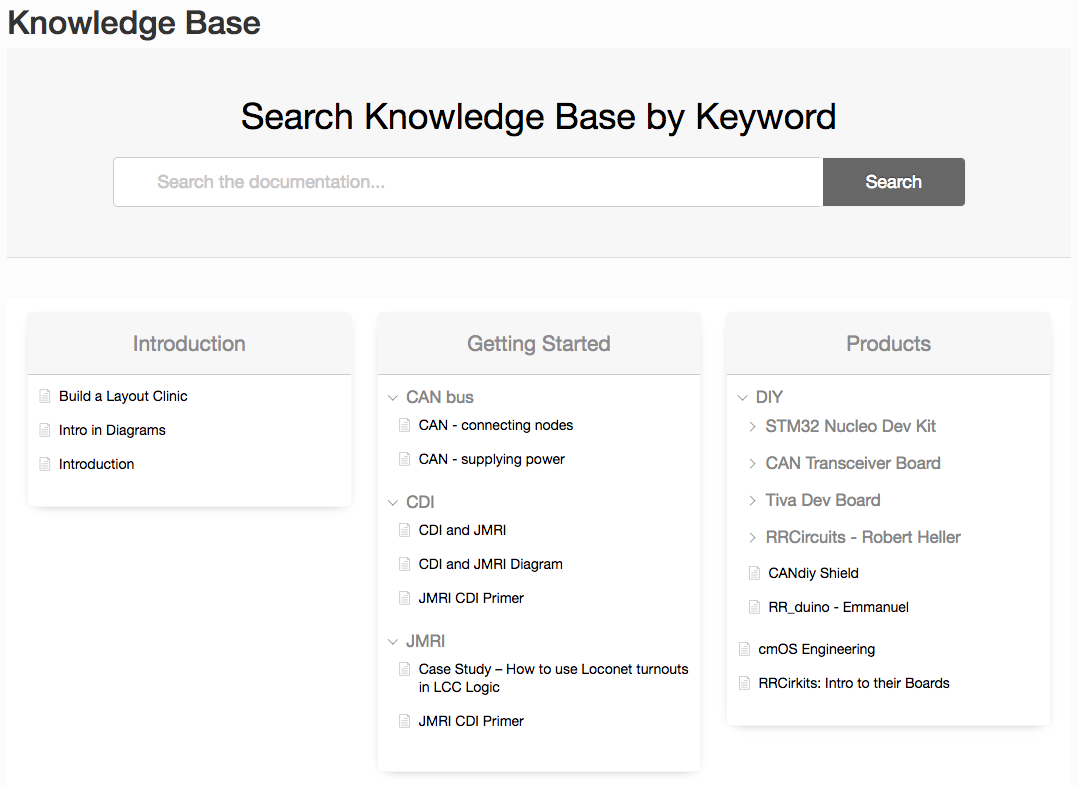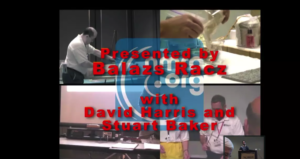We’re pleased to announce that the latest set of LCC Standards Documents (2024-07-22) were adopted by the NMRA Board of Directors at the 2025-01-24 meeting and posted on the Layout Command Control™ (LCC) page.
The complete set can also be downloaded as a single ZIP file here: All-LCC-Documents-including-those-Adopted-2025-01-24
Summary of Changes to LCC Documents 2024-07-22
New Documents for Public Comment
The following set of protocols define the new LCC Train Control capability. These protocols have to be implemented by
Throttles, Command Stations and wireless Trains in order to communicate with each other using the LCC bus.
S-9.7.4.6-TrainControl-2024-07-22-Draft.pdf
TN-9.7.4.6-TrainControl-2024-07-22-Draft.pdf
Defines the basic interactions between a Throttle and a Train on the LCC bus, including control of speed, functions and emergency stop. Speed is represented independently of speed steps and of scale.
The protocol is bidirectional, which allows the Train to give state feedback like actual speed and function information to the throttle.
The same protocol will be used between Throttles and Command Stations as well as between Throttles and wireless Trains; the Throttle implementation has to be the same. Consisting is also possible between a DCC and a wireless Train.
The TN has additional commentary on how to implement a DCC Command Station using the LCC protocol suite.
S-9.7.4.7-TrainSearch-2024-07-22-Draft.pdf
TN-9.7.4.7-TrainSearch-2024-07-22-Draft.pdf
Defines a peer-to-peer protocol for finding and identifying Trains on the LCC network by address or cab number, independently of whether those trains are represented by a Command Station or are connected directly to the network via wireless communication. The client of this protocol will be implemented by Throttles, the server of this protocol by Command Stations and wireless Trains.
A network can mix Command Station and wireless Trains, providing a seamless upgrade path for the user.
S-9.7.4.8-FunctionDescriptionInformation-2024-07-22-Draft.pdf
TN-9.7.4.8-FunctionDescriptionInformation-2024-07-22-Draft.pdf
Defines a descriptor of the User Interface of a Train for a Throttle, by providing the list of functions it supports. Functions are listed by number, name, description and whether they are a momentary, toggle or analog function.
Documents with Changes for Public Comment
S-9.7.0.3-UniqueIdentifiers-2024-07-22-Draft.pdf
TN-9.7.0.3-UniqueIdentifiers-2024-07-22-Draft.pdf
-
- Updates ranges for various train control systems: DC, DCC, TMCC, etc
These allocations are used by Command Stations operating locomotives using the respective track protocol like DCC.
S-9.7.0.4-EventIdentifiers-2024-07-22-Draft.pdf
TN-9.7.0.4-EventIdentifiers-2024-07-22-Draft.pdf
-
- Adds Train Search protocol event range
- Adds 11-bit extended DCC accessory address range
- Reformat some tables
These allocations are used by the Train Search Protocol, and allow sending DCC Extended Accessory commands to the track via an LCC Command Station. The Extended Accessory allocation has been updated to support up to 255 as aspect number, as enabled by a recent change to the DCC standards.
S-9.7.1.1-CanPhysical-2024-07-22-Draft.pdf
TN-9.7.1.1-CanPhysical-2024-07-22-Draft.pdf
-
- Add a section on Electronic Labeling
- Add a section on Injection Current
- Added discussion of CAN bit timing◦ Standardize the use of ALT_L/ALT_H for the NMRA S-9.1.2 DCC signal
- Clarify discussion of gateways and repeaters
Adding the DCC signal to the LCC cable allows connecting DCC Power Stations (Boosters) via a single cable to the network. The CAN bit timing update helps manufacturers build products that are certain to function with up to 1000’ of LCC cable.
S-9.7.2.1-CanFrameTransfer-2024-07-22-Draft.pdf
TN-9.7.2.1-CanFrameTransfer-2024-07-22-Draft.pdf
Add to the behavior of the AME Message
-
- Fix calculation error in the example provided in the TN.
- The additional requirement on the processing of AME messages are needed for LCC throttles to correctly function when the DCC Command Station is power cycled. This behavior is taken from an implementation detail of an existing LCC throttle and elevated to the standard to ensure future interoperability.
S-9.7.3-MessageNetwork-2024-07-22-Draft.pdf
TN-9.7.3-MessageNetwork-2024-07-22-Draft.pdf
-
- Update the table of PIP bits
- Clarifies the content of the OIR message
- Clarified the discussion of priorities
Deprecates certain bits in the protocol identification that were for protocols that were never implemented. Minor updates to the wording of certain sections to ensure clarity of understanding.
S-9.7.3.1-EventTransport-2024-07-22-Draft.pdf
TN-9.7.3.1-EventTransport-2024-07-22-Draft.pdf
-
- Add Events with Payload
Establishes a new method for sending broadcast messages with more than 8 bytes of content. This transport is used by under-development protocol for Location Services (RFID, RailCom, etc).
S-9.7.4.1-ConfigurationDescriptionInformation-2024-07-22-Draft.pdf
TN-9.7.4.1-ConfigurationDescriptionInformation-2024-07-22-Draft.pdf
-
- The size of integer variables is restricted to 1, 2 or 4 bytes
- Define signed vs unsigned behavior of integer variables
- The requirement that unused bytes in a String variable be set to null has been removed
- Addition of float variables
- Discussion of possible ways of representing group names
Adding performance improvements, removing unused features, and adding new features needed by manufacturers.
S-9.7.4.2-MemoryConfiguration-2024-07-22-Draft.pdf
TN-9.7.4.2-MemoryConfiguration-2024-07-22-Draft.pdf
-
- Remove the write-size bits in the Configuration Options Reply
- Add stream reads to a Configuration Options Reply bit
Deprecates certain unused features and updates the definition of a future feature.
S-9.7.4.3-SimpleNodeInformation-2024-07-22-Draft.pdf
TN-9.7.4.3-SimpleNodeInformation-2024-07-22-Draft.pdf
-
- Update how the two data blocks are versioned
Adds a requirement on how to make current devices future-proof in case the standard evolves to newer versions.
Documents that have not changed since 2021-04-25 (for completeness)
There were no changes to these documents since 2021-04-25 but they are included here for completeness
TN-9.7.0.1-Glossary-2021-04-25.pdf
TN-9.7.0.2-CommonInformation-2021-04-25.pdf
S-9.7.3.2-DatagramTransport-2021-04-25.pdf
TN-9.7.3.2-DatagramTransport-2021-04-25.pdf
S-9.7.4.4-FirmwareUpgrade-2021-04-25.pdf
TN-9.7.4.4-FirmwareUpgrade-2021-04-25.pdf
S-9.7.4.5-BroadcastTime-2021-04-25.pdf
TN-9.7.4.5-BroadcastTime-2021-04-25.pdf
Products implementing the proposed standards
Much of the changes presented in this package are around implementing Throttles, DCC Command Stations and direct wireless Trains. At the time of this writing, the following products are available that implement the proposed protocol and represent evidence of functionality and interoperability:
-
- TCS UWT-100 wireless Throttle
- TCS UWT-50 wireless Throttle
- TCS CS-105 Command Station with wireless and wired LCC port
- TCS LT-50 wired Throttle and Command Station
- MRC Nexxt Command Station (announced)
- MRC Nexxt wireless Throttle (announced)
The following products allow connecting Throttles of additional manufacturers to the LCC protocol suite:
-
- RR-CirKits LCC-LocoNet Gateway, supporting the use of LocoNet throttles (wired and wireless) with LCC.
- MRC Nexxt wireless adapter (announced), supporting the use of MRC (wired and wireless) throttles and wireless phone apps with LCC.
- TCS CS-105 Aux Port and TCS LCC WiFi Panel (announced), supporting the use of NCE, RamTraxx, System
One and ISE ProtoThrottle wired and wireless throttles with LCC.
-
- TCS CS-105 Aux Port and TCS LCC WiFi Panel (announced), supporting the use of XpressNet wired and wireless throttles such as Lenz, Roco, CVP and ISE ProtoThrottle with LCC.
The following free software allows connecting as Throttle to the LCC protocol suite:
-
- JMRI, supporting automated throttles, on-screen throttles, and wireless throttles and phone apps.
- LCC Tools app for iOS, supporting throttles on phones, tablets and laptops, as well as additional LCC features, such as configuration


